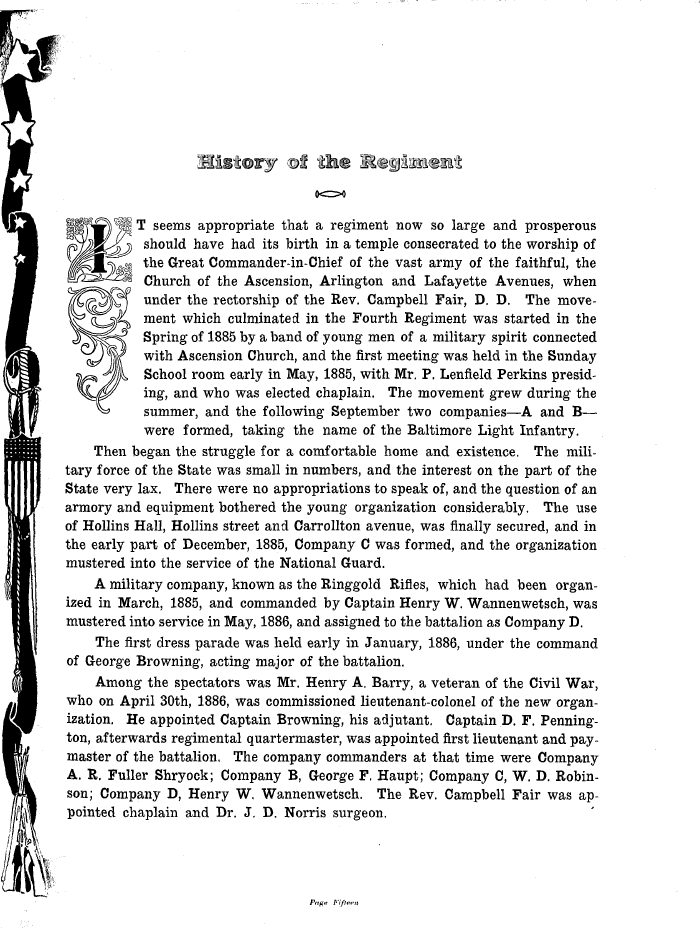 |
||||
 |
||||
| History of the Regiment T seems appropriate that a regiment now so large and prosperous should have had its birth in a temple consecrated to the worship of the Great Commander-in-Chief of the vast army of the faithful, the Church of the Ascension, Arlington and Lafayette Avenues, when under the rectorship of the Rev. Campbell Fair, D. D. The movement which culminated in the Fourth Regiment was started in the Spring of 1885 by a band of young men of a military spirit connected with Ascension Church, and the first meeting was held in the Sunday School room early in May, 1885, with Mr. P. Lenfield Perkins presiding, and who was elected chaplain. The movement grew during the summer, and the following September two companies—A and B— were formed, taking the name of the Baltimore Light Infantry. Then began the struggle for a comfortable home and existence. The military force of the State was small in numbers, and the interest on the part of the State very lax. There were no appropriations to speak of, and the question of an armory and equipment bothered the young organization considerably. The use of Hollins Hall, Hollins street and Carrollton avenue, was finally secured, and in the early part of December, 1885, Company C was formed, and the organization mustered into the service of the National Guard. A military company, known as the Ringgold Rifles, which had been organized in March, 1885, and commanded by Captain Henry W. Wannenwetsch, was mustered into service in May, 1886, and assigned to the battalion as Company D. The first dress parade was held early in January, 1886, under the command of George Browning, acting major of the battalion. Among the spectators was Mr. Henry A. Barry, a veteran of the Civil War, who on April 30th, 1886, was commissioned lieutenant-colonel of the new organization. He appointed Captain Browning, his adjutant. Captain D. F. Penning-ton, afterwards regimental quartermaster, was appointed first lieutenant and paymaster of the battalion. The company commanders at that time were Company A. R. Fuller Shryock; Company B, George F. Haupt; Company C, W. D. Robinson; Company D, Henry W. Wannenwetsch. The Rev. Campbell Fair was appointed chaplain and Dr. J. D. Norris surgeon. Pag, Fifteen |